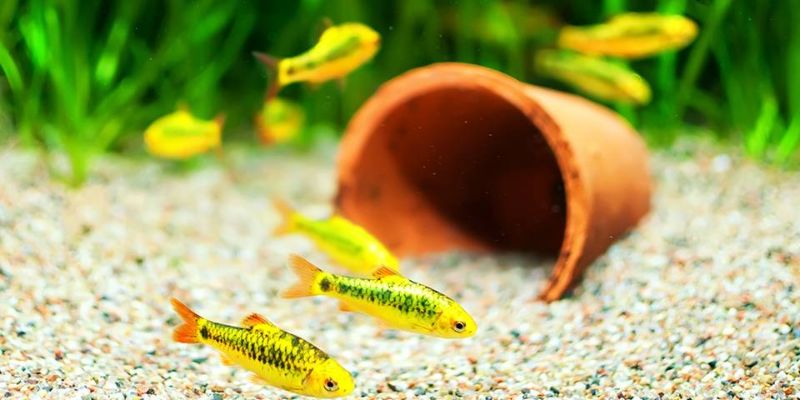The well-being of your fish and other aquarium inhabitants depends heavily on the substrate you select. The substrate not only improves the aquarium’s visual appeal, but it also helps keep the water clean and sustains the environment. Here, we’ll go over everything you need to know to “How to Choose the Right Substrate for a Fish Aquarium?”, so you can meet the needs of your fish and your own aesthetic tastes.
Why an Aquarium Needs Substrate
The substrate in an aquarium is essential to the health of the ecology therein. The importance of making the proper substrate choice can be summarized as follows:
Biological Filtration
The beneficial bacteria that are so important to the biological filtering process make their home on the substrate. These bacteria aid in the detoxification process by converting ammonia and nitrites to safer nitrates. Keeping your fish tank’s water quality at its best requires a thriving population of beneficial bacteria in the substrate.
Development of Plants
Choosing the right substrate for your aquarium plants is essential to their health, growth, and development. Substrates differ in their ability to supply plants with nutrients and trace elements. The substrate should also be of a suitable texture to provide a firm hold for the plant’s roots.
Comfort of Fish
The comfort and behavior of your fish are also affected by the substrate. Fish that live at the bottom of the food chain, like catfish, are best suited to a substrate that is soft enough for them to dig and scavenge. Substrates with larger grain sizes, more like their natural habitat, may be preferred by other species, including cichlids. When choosing a substrate, it’s crucial to have a firm grasp on the needs of your fish species.
How to Choose the Right Substrate for a Fish Aquarium?
-
Type and Size of the Grains
The substrate’s usefulness and aesthetic appeal are greatly affected by its grain size and composition. Some typical substrate choices and their features are as follows.
- Sand: Fine-grained sand is used for its visual appeal and because it is ideal for fish species like gobies and wrasses that filter food through the substrate. However, with time, sand can clump, reducing water flow and perhaps leading to anaerobic pockets.
- Gravel: Gravel is a flexible substrate option because it can be found in a wide range of sizes and colors. Most fish species will thrive in the tank’s well-oxygenated water due to its design. Some fish, however, may have health problems if they swallow pebbles of any size.
Substrates made from aquatic soil are high in nutrients and developed especially for planted aquariums. They’re great for plant growth, but they may need extra care and fertilizer than you’d expect.
Conditional Requirements for Water Hardness and pH
The water pH and hardness needs of various fish varieties vary greatly. Crushed coral and aragonite are two substrates that can increase the water’s pH and hardness, making them ideal for alkaline-loving fish. However, discus and tetras, among others, prefer somewhat acidic water since it is easier for them to digest. Choose a substrate that suits the requirements of the fish you intend to keep.
It is simple to clean and maintain.
It’s crucial to your fish’s health that you keep the aquarium in good condition at all times. When choosing a substrate, keep its simplicity of upkeep and cleaning in mind. Sand, for example, must be cleaned using specialized siphoning methods so as not to damage the substrate layer, while gravel is much simpler to remove debris from. Select a substrate that can be easily cleaned and has effective trash collection.
Aesthetic Appeal
The appearance of your aquarium as a whole will be enhanced by the substrate. When deciding on a substrate, keep the tank’s theme and design in mind. Substrates with neutral colors, such natural gravel or sand, are more adaptable and timeless. Colored substrates are another option for making a striking presentation.
Conclusion
When setting up a fish tank, the substrate you use is crucial to maintaining a healthy ecosystem. Your aquarium’s aesthetics and the health of your fish will benefit from careful consideration of issues including grain size, composition, pH requirements, and maintenance simplicity. Always remember to do your homework on the species of fish you intend to keep, and if in doubt, consult the experts at your local aquarium store. The right substrate can help you create a welcoming and engaging space for your aquatic friends.

